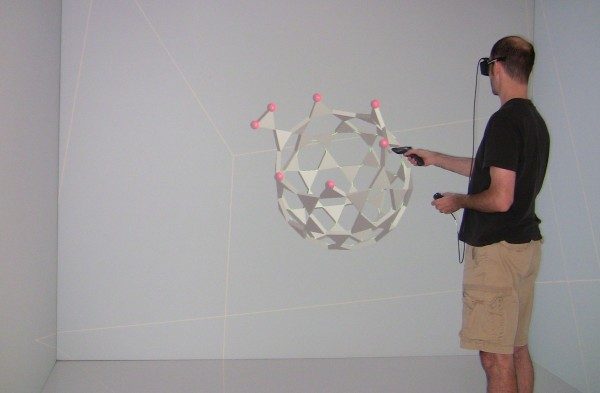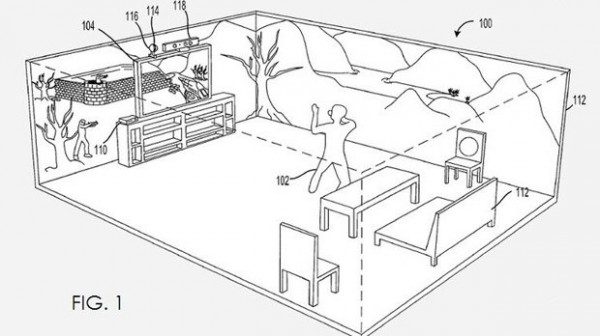While inexpensive head mounted displays and virtual reality locomotion platforms promise to bring VR to the mainstream in the near future, you might be surprised to find that extremely immersive and interactive virtual reality environments already exist today. We talked about VIRTSIM the other week, and now we’d like to show you the Cave Automatic Virtual Environment, also known as a CAVE.
A CAVE is am incredible virtual reality environment that makes use of multiple stereoscopic projectors, hand tracking, and head tracking. By combining these bits of tech together with some intelligent software, a CAVE creates an extremely compelling virtual environment that allows the user to reach out and interact with objects that float in front of them like holograms:
Difficulty Filming Caves
One issue with CAVEs is that it’s been difficult to demonstrate how they look to the user without actually using one yourself. Here’s one example of what a CAVE looks like to an outside observer if special steps haven’t been taken to ensure accurate recording (this video also shows the broader shape of a CAVE; a cube with one open side):
Oliver Kreylos, who produced the first video above, is a PhD graduate of UC Davis who has lots of experience with CAVEs. He is a founding member of the W.M. Keck Center for Active Visualization of Earth Sciences. The Keck Center is a UC Davis facility which employs CAVEs for immersive visualization of geology data. On his blog Kreylos recently wrote about best practices for proper filming of CAVEs. He notes that the trick is to track the viewpoint of the camera, rather than the user. Unless you do this, the resulting video will look much like the second one above.
Tracking the camera as a the viewpoint causes the projectors to show the proper perspective to the camera. Normally a CAVE is 3D, however this is disabled when filming to prevent a blurry image. Even though the first video above is not a 3D video, parallax cues provide your brain with powerful spacial information; the result is a convincing interaction of what appears to be an object floating out in front of you. even though the video isn’t stereoscopic 3D.
Of course filming while the camera is being tracked instead of the user introduces some complications. To the user doing the demonstration the cave looks like the second video above, making it quite difficult to actually use the CAVE. Kreylos explains:
This means the actual user in the movies does not see the virtual objects properly, and is essentially flying blind. That’s the reason why the interactions here look awkward. Instead of simply being able to touch a virtual object as if it were real and then interact with it, the poor user has to judge his or her actions against the feedback of the generated images (which, from his or her perspective, don’t look like real objects at all), and adjust accordingly. This is why it was so hard to properly measure a distance on the globe in the video, it was basically pointing trial-and-error.
So the choice seems to be: let the user in the CAVE be the “main” viewer, allowing them to interact properly and fluently, but create a movie that looks utterly unconvincing, or let the camera be the “main” viewer, capturing beautiful video, but giving the impression that CAVEs are hard to use. If you want to communicate that CAVEs are awesome to look at and easy to use, that’s a lose-lose situation. Or at least that’s what I thought…
Kreylos notes that a happy medium can indeed be achieved. By tracking both the user and the camera as the viewer, then projecting each view onto separate walls of the CAVE, Kreylos is able to show both the ‘holographic’ nature of the CAVE as well as the ease of use. He demonstrates here:
CAVEs do look rather amazing. Unfortunately size, complexity, and cost have kept out of the mainstream. However, Microsoft has recently filed a patent for a CAVE-like gaming environment which would project games onto the walls of a player’s room:
Maybe in the near future ‘mancave’ will take on a more literal (and virtual) meaning.








